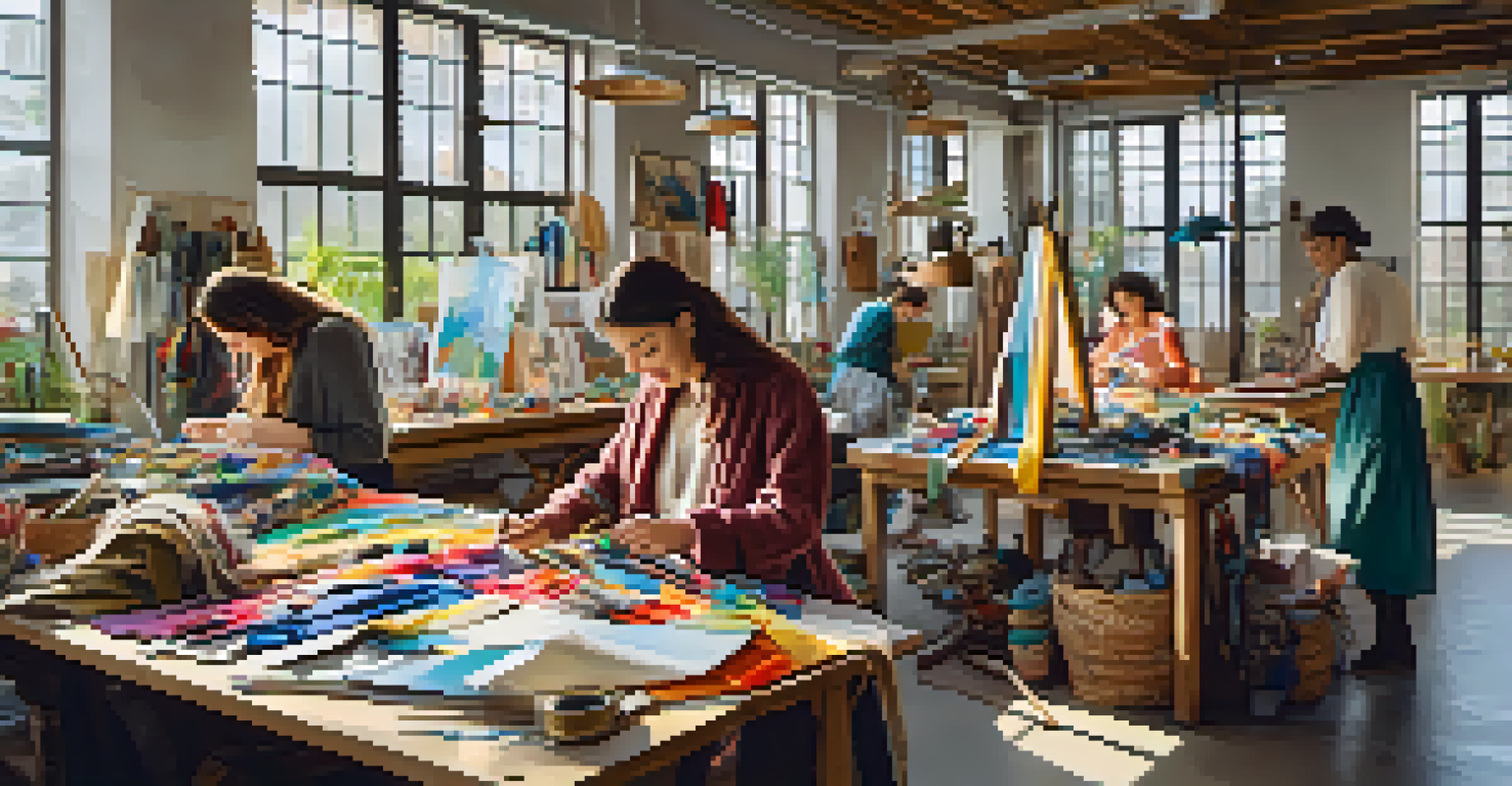Luxury Brands and Climate Change: A Responsibility to Act

Understanding the Impact of Luxury Brands on the Environment
Luxury brands hold a unique position in the market, often associated with exclusivity and high-quality materials. However, this luxury often comes at a significant environmental cost. From resource-intensive production processes to extensive supply chains, the environmental footprint of these brands can be daunting.
Sustainability is no longer a choice; it's a necessity for luxury brands to thrive in a conscious marketplace.
For instance, the production of leather and exotic materials can lead to deforestation and biodiversity loss. Moreover, the fashion industry, with luxury brands at the forefront, is known to be a major contributor to greenhouse gas emissions. Recognizing this impact is the first step toward meaningful change.
By understanding their environmental impact, luxury brands can begin to take responsibility and implement strategies that mitigate their negative effects. This awareness can pave the way for more sustainable practices, ultimately benefiting both the planet and their brand image.
The Growing Consumer Demand for Sustainability
Today's consumers are more informed and environmentally conscious than ever before. They seek brands that not only offer quality products but also demonstrate a commitment to sustainability. This shift in consumer behavior is prompting luxury brands to rethink their practices.

For example, brands like Stella McCartney have gained recognition for their sustainable approach, using eco-friendly materials and ethical production methods. This has resonated with consumers who appreciate transparency and social responsibility.
Luxury Brands Impact the Environment
Luxury brands often contribute significantly to environmental degradation through resource-intensive production and extensive supply chains.
As luxury brands embrace sustainability, they can foster deeper connections with their consumers, making their brand ethos more relevant. This not only helps the environment but also enhances brand loyalty and trust.
Sustainable Practices in Luxury Brand Operations
Implementing sustainable practices can take many forms, from sourcing materials responsibly to reducing waste in production. Luxury brands are beginning to adopt circular economy principles, where products are designed for longevity and can be recycled or repurposed.
Luxury is not about the things you own; it’s about how those things make you feel, which increasingly includes their impact on the planet.
For instance, brands like Gucci have introduced initiatives to recycle and upcycle materials, transforming waste into new products. This not only minimizes waste but also creates unique items that appeal to consumers looking for one-of-a-kind pieces.
By prioritizing sustainability in their operations, luxury brands can significantly reduce their environmental footprint. This shift not only demonstrates responsibility but also sets a precedent for the industry as a whole.
The Role of Innovation in Sustainable Luxury
Innovation plays a crucial role in the journey toward sustainability for luxury brands. By investing in research and development, brands can discover new materials and technologies that reduce environmental impact. Innovations such as lab-grown leather or biodegradable fabrics are changing the landscape of luxury fashion.
Moreover, luxury brands can harness technology to enhance transparency in their supply chains. Blockchain technology, for instance, allows consumers to trace the origin of materials, ensuring ethical sourcing and production practices are upheld.
Consumer Demand for Sustainability Grows
Consumers are increasingly seeking luxury brands that demonstrate a commitment to sustainability, prompting brands to rethink their practices.
By embracing innovation, luxury brands not only address climate change but also position themselves as leaders in a rapidly evolving market. This proactive approach can inspire other brands to follow suit, amplifying the impact on the industry.
Collaborations and Partnerships for Greater Impact
Collaborations between luxury brands and environmental organizations can amplify efforts to combat climate change. These partnerships can lead to innovative solutions and shared knowledge, fostering a more sustainable future for the industry.
For example, the partnership between luxury brands and initiatives like the Fashion Pact aims to unite the fashion industry in addressing climate change, biodiversity loss, and ocean health. Such collaborations can drive meaningful change and set industry standards.
By working together, luxury brands can pool resources and expertise, creating a more significant impact than any single brand could achieve alone. This collaborative spirit is essential in the fight against climate change.
The Importance of Transparency in Luxury Branding
Transparency is becoming increasingly important in the luxury market. Consumers are demanding to know the origins of products and the ethical standards upheld by brands. This push for transparency encourages luxury brands to be accountable for their practices.
Brands that openly share their sustainability efforts and challenges can build trust with consumers. For instance, when brands disclose their carbon footprint and set clear sustainability goals, they demonstrate commitment and authenticity.
Innovation Drives Sustainable Practices
By embracing innovation and technology, luxury brands can reduce their environmental impact and lead the industry toward more sustainable practices.
By fostering a culture of transparency, luxury brands can not only enhance their reputation but also engage consumers in their sustainability journey. This creates a community of informed shoppers who support brands making a positive impact.
The Future of Luxury Brands in a Changing Climate
As climate change continues to affect our planet, luxury brands face both challenges and opportunities. The brands that adapt and prioritize sustainability will thrive in this new landscape. This involves not just changing materials but also rethinking the entire business model.
The future may see luxury brands prioritizing experiences over products, catering to consumers who value sustainable luxury. This shift could lead to innovative offerings that blend luxury with environmental consciousness, such as sustainable travel or eco-friendly luxury goods.

Ultimately, the responsibility to act lies with luxury brands as they navigate the complexities of climate change. By embracing sustainability, they can redefine luxury for a new generation, ensuring that it aligns with the values of consumers today.